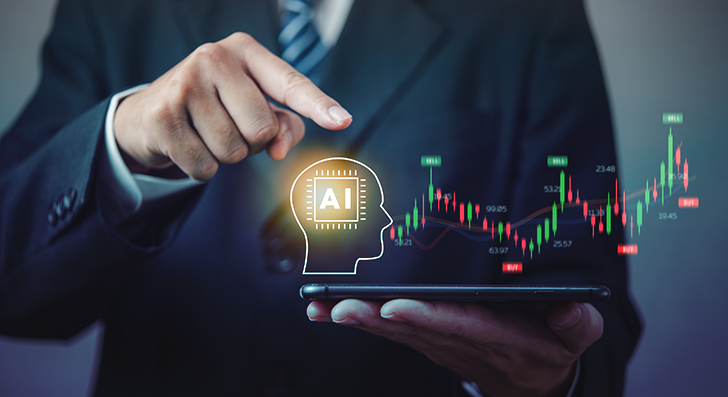With the financial world changing rapidly, the use of artificial intelligence (AI) has become a game changer, especially when making credit choices. Traditional methods of assessing credit often use old information that may not show how a person’s financial situation has changed over time. This article describes how artificial intelligence is changing credit selection by making it more accurate and nuanced.
1. What are the Problems with Traditional Credit Scores:
Lenders have long used traditional credit scoring models. These models use algorithms that mainly look at past financial information, such as credit history, income, and debts. But these models have flaws; they may not fully reflect an individual’s current financial situation, especially in a rapidly changing economy.
A. Insufficient Direct Indications
A major problem with traditional credit scores is that they are based on past information and cannot reflect a person’s current financial status. A borrower’s ability to repay a loan can be greatly affected by the economy, job security, and unexpected events. Artificial intelligence (AI) can fill this gap by continuously analysing real-time data.
B. Cannot Evaluate Non-Standard Data
Standard credit scoring models often ignore non-traditional sources that can provide a more complete picture of a person’s credit profile. AI algorithms, on the other hand, can process large amounts of different types of data, such as social media activity, online behaviour, and other data sources, to provide a more complete picture.
2. The Role of Artificial Intelligence in Credit Decisions:
Artificial intelligence, powered by machine learning algorithms, is changing the way credit decisions are made by adding more advanced and flexible methods to old models. This section discusses the key ways in which artificial intelligence can improve credit selection.
A. Predictive Analytics
Artificial intelligence is very good at predictive analytics, which uses past data and complex formulas to guess what will happen in the future. AI models are better at predicting creditworthiness than traditional models because they look at patterns and correlations and take into account a wider range of factors and their changes over time.
B. Use Machine Learning to Identify Risks
Because machine learning systems are always learning from new data, they can help lenders make more accurate credit risk assessments. These algorithms can evolve over time and find more patterns and outliers that the standard model may miss. Because it can change, AI-driven risk assessment can better respond to economic uncertainty.
C. Real-Time Monitoring
One of the best things about artificial intelligence for credit decisions is that it can track and examine data instantly. Using APIs and data sources, AI models can track how a borrower’s financial health changes over time. This provides lenders with up-to-date information about credit risk. This dynamic monitoring allows credit selections to be based on the most recent information.
3. Add Different Types of Data:
Artificial intelligence’s ability to process and evaluate different types of data is critical to making credit decisions. This section discusses how to add various data to your credit reports to make them more accurate and accessible to everyone.
A. Social Media and People’s Online Behavior
Artificial intelligence algorithms can look at a person’s online and social media activities to learn more about their lifestyle, spending habits and overall money management. This additional information can provide a more complete picture of a borrower’s creditworthiness, especially for people without much standard credit history.
B. Rent and Utilities Payment History
Artificial intelligence models can provide a more complete picture of a person’s financial situation by looking at information such as utility and rental data. This is especially helpful for people who don’t have a strong credit background but have good money habits in other areas of their lives.
C. Educational and Work Background
Artificial intelligence algorithms can look at a person’s education and work history to see how stable they are and how much money they can make. This comprehensive approach can help lenders make better lending decisions, especially for people with atypical financial circumstances.
4. Ensure Ethics and Reduce Prejudice:
As artificial intelligence becomes increasingly important in credit decisions, it is also important to consider ethics and reduce bias. This section discusses the issues that arise when artificial intelligence is used for credit checks and suggests ways to ensure everything is fair and clear.
A. To be Fair and Avoid Bias in AI Models
AI models can unintentionally amplify biases from previous data, leading to unfair outcomes. To ensure fair and equal credit selection, it is important that developers and lenders proactively look for and correct biases in the algorithm.
B. Being Able to Explain Things and having an Open Mind
The “black box” nature of some AI models makes it difficult to explain credit options to humans. To build trust and understanding among borrowers, it is important to explain lending decisions openly and clearly.
C. Regular Inspections and Audits
Artificial intelligence models must be regularly monitored to avoid bias and to meet ethical standards. As new information is added to the decision-making process, continuous tracking can help identify and resolve issues that may arise.
Conclusion:
When artificial intelligence is used to make credit decisions, it changes everything about financial operations. Artificial intelligence can improve credit decisions by using predictive analytics, machine learning, and other data sources to provide a more accurate, complete, and real-time understanding of an individual’s creditworthiness. To build trust in this ever-changing environment, players must consider ethical issues, eliminate bias, and be open about what they do. As artificial intelligence continues to develop, responsible lending practices and new technologies will come together to change the way credit checks are performed in the future, to the benefit of both lenders and borrowers.
FAQs:
 Enhancing Investment Strategies with AI
Enhancing Investment Strategies with AI
 AI-Powered Stock Market Predictions for Smart Investing
AI-Powered Stock Market Predictions for Smart Investing
 Advanced AI Solutions for Risk Management
Advanced AI Solutions for Risk Management